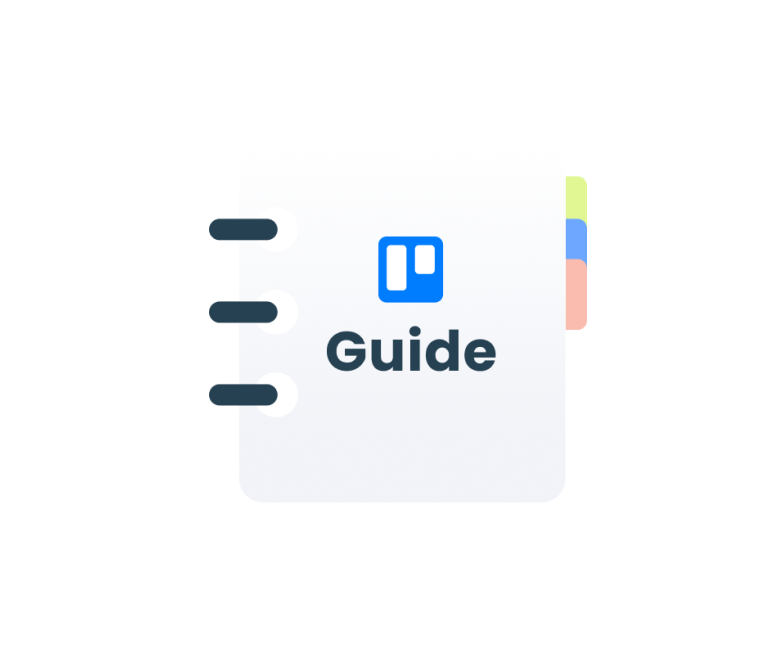Jira Project Management: A Comprehensive Guide to Transform the Way Teams Work
Everything You Need to Know About Project Management
Project management is a critical discipline that enables organizations to execute their strategic goals by organizing resources, tasks, and timelines effectively. Whether you are a seasoned project manager or just starting, understanding the fundamentals and advanced concepts of project management is essential. This guide serves as your ultimate resource, covering every aspect of project management to help you succeed in your projects.
What is Project Management?
Project management is a structured approach to planning, organizing, and managing resources to achieve specific goals and meet specific success criteria. It involves applying knowledge, skills, tools, and techniques to project activities to fulfill the project requirements. The discipline of project management is vital across industries and sectors, providing a framework to achieve objectives efficiently and effectively.

Key Phases of Project Management
Understanding the project life cycle is fundamental to effective project management. The project life cycle is a series of phases that a project passes through from its initiation to its closure. These phases help project managers structure and manage their projects systematically.
- Project Charter: This document formally authorizes the project and provides a high-level overview, including objectives, scope, stakeholders, and the project manager's authority level.
- Stakeholder Identification: Identifying all parties affected by the project, including sponsors, team members, and end-users.
Project Planning:
- Scope Management: Defining and controlling what is and is not included in the project by gathering requirements. Tools like the Requirements Traceability Matrix (RTM) and Work Breakdown Structure (WBS) ensure requirements are tracked and broken down into manageable tasks, keeping the project aligned with its objectives.
- Schedule Management: Creating a detailed timeline of project activities using tools like Gantt charts and PERT charts.
- Cost Management: Estimating, budgeting, and controlling costs to keep the project within the approved budget.
- Resource Management: Efficiently utilizing people, materials, and equipment.
- Communication Management: Planning how information will be disseminated among stakeholders.
- Risk Management: Identifying, analyzing, and planning for potential risks to mitigate their impact.
- Procurement Management: Managing the acquisition of goods and services from external sources.
Project Execution:
- Task Assignment and Team Management: Delegating tasks to team members and ensuring they have the resources needed to complete them.
- Performance Tracking: Monitoring project progress and performance against the plan, using tools like dashboards, EVM, and progress reports.
Project Monitoring and Controlling:
- Progress Monitoring: Regularly checking the project's progress to ensure it stays on track.
- Change Management: Managing changes to the project scope, schedule, and costs. If necessary, considering fast tracking and crashing.
- Quality Management: Ensuring the project's deliverables meet the required standards and stakeholder expectations. There are key tools used to ensure that you meet quality standards: fishbone diagram, control charts, check lists, Pareto charts, histograms, flowchart, and scatter plot.
- Final Deliverable Handover: Ensuring all project deliverables are completed and handed over to the client or stakeholders.
- Post-Project Evaluation: Reviewing the project to identify lessons learned and best practices for future projects.
- Project Closure Documentation: Completing and storing all project documents for future reference.
The Role of a Project Manager
A project manager is the person responsible for leading a project from its inception to completion. 
This role involves:
- Leadership and Team Management: Inspiring and guiding the project team to achieve project objectives.
- Decision Making: Making critical decisions to keep the project on track.
- Problem Solving: Addressing issues and obstacles that arise during the project lifecycle.
- Stakeholder Communication: Keeping stakeholders informed and managing their expectations.
- Budget and Schedule Management: Ensuring the project stays within budget and on schedule.
For a deeper understanding of the qualities and responsibilities of a good project manager, visit What Does a Good Project Manager Do? and Understanding the PMI Talent Triangle.
Essential Principles of Project Management
There are three key principles to help ensure that projects are completed successfully and meet stakeholder expectations.
The Egg Principle
This principle likens project management to an egg. The project charter is the rigid shell, outlining initial frameworks like timeframes, costs, and resources. Internally, plans evolve within this structure using rolling wave planning, which addresses both certainty and flexibility. This ensures that the project develops without exceeding initial constraints.
The Python Principle
The Python Principle emphasizes a project lifecycle that starts with initiation and ends with closure. It incorporates the Deming Cycle (Plan-Do-Check-Act), focusing on continuous improvement throughout the project's life.
The Principle of Teamwork and Proactivity
Effective project management relies on teamwork and proactivity. While expertise in the project's subject can be beneficial, the manager's role is to facilitate collaboration and planning among team members. Proactivity in risk management, anticipating and mitigating potential issues, is crucial for success.
Explore more about the essential principles of project management here.
Key Roles in Project Management
A successful project relies on a team with clearly defined roles and responsibilities. Key roles in project management include the project manager, project coordinator, team members, and stakeholders. Each role plays a vital part in the project's success.

- Project Manager: Oversees the entire project, from planning to completion.
- Project Coordinator: Assists the project manager in administrative tasks and coordination.
- Team Members: Execute the project tasks and contribute their expertise.
- Stakeholders: Individuals or groups with an interest in the project's outcome.
For a detailed overview of key roles in project management, visit this link. To understand the role of a project coordinator, click here.
Project Management Methodologies
Project management methodologies provide structured approaches to planning, executing, and managing projects. These methodologies offer frameworks and processes that help project managers and teams achieve their goals efficiently and effectively. Choosing the right methodology depends on the nature of the project, the project team's experience, and the organization's needs. 
Agile
Agile is a flexible and iterative project management methodology designed to accommodate changes and deliver value quickly. It emphasizes collaboration, customer feedback, and small, incremental changes rather than extensive planning at the beginning. Key characteristics of Agile include:
- Iterative Process: Work is divided into small, manageable units called iterations or sprints, typically lasting 1-4 weeks.
- Customer Involvement: Continuous engagement with customers to gather feedback and make improvements.
- Flexibility: Adaptability to change even late in the project.
- Collaboration: Strong emphasis on teamwork and communication.
Agile is particularly suited for projects with dynamic requirements, such as software development, where customer needs and market conditions can change rapidly.
Scrum
Scrum is a subset of Agile and is widely used in software development. It provides a more structured framework with specific roles, events, and artifacts. Key elements of Scrum include:
- Roles: Scrum Master (facilitator), Product Owner (stakeholder representative), and Development Team (those who create the product).
- Sprints: Time-boxed iterations, usually 2-4 weeks long, where a set of features is developed.
- Meetings: Daily stand-ups (short, daily meetings), sprint planning, sprint review, and sprint retrospective.
- Artifacts: Product backlog (list of desired features), sprint backlog (features to be developed in a sprint), and increment (the sum of all completed work).
Scrum is ideal for projects requiring a high degree of flexibility and collaboration.
Waterfall
The Waterfall methodology is a traditional, linear project management approach. It follows a sequential process where each phase must be completed before moving on to the next. Key characteristics of Waterfall include:
- Sequential Phases: Requirements, design, implementation, testing, deployment, and maintenance.
- Documentation: Extensive documentation at each phase.
- Fixed Scope: Changes are difficult to implement once the project is underway.
Waterfall is best suited for projects with well-defined requirements and deliverables, such as construction projects or large-scale infrastructure developments.
Lean
Lean methodology focuses on maximizing value by eliminating waste and improving efficiency. Originating from manufacturing practices, Lean principles are now applied in various industries. Key principles of Lean include:
- Value Stream Mapping: Identifying and mapping out all steps in the process to highlight waste.
- Continuous Improvement: Ongoing efforts to improve processes and products.
- Just-In-Time Production: Reducing inventory and producing only what is needed when it is needed.
- Empowerment of Teams: Encouraging team members to take initiative and contribute to problem-solving.
Lean is particularly effective in industries where efficiency and waste reduction are critical, such as manufacturing and logistics.
Kanban
Kanban is another Agile methodology that focuses on visualizing work, limiting work in progress, and improving flow. Key components of Kanban include:
- Visual Boards: Use of visual boards (Kanban boards) to track progress and identify bottlenecks.
- Work In Progress Limits: Limiting the number of tasks in progress at any given time to improve focus and efficiency.
- Continuous Delivery: Delivering work continuously rather than in fixed iterations.
Kanban is suitable for projects that require ongoing, incremental delivery, such as maintenance and support tasks.
Six Sigma
Six Sigma is a data-driven methodology focused on improving quality and reducing defects in processes. It uses statistical methods to identify and eliminate defects and variations. Key principles of Six Sigma include:
- DMAIC Framework: Define, Measure, Analyze, Improve, and Control.
- Focus on Quality: Striving for near-perfect quality (3.4 defects per million opportunities).
- Data-Driven Decision Making: Using data and statistical analysis to drive improvements.
Six Sigma is commonly used in manufacturing, healthcare, and other industries where quality is paramount.
Read about the history and various project management methodologies here.
Project Planning Tools and Techniques
Effective project planning is crucial for the successful execution and completion of projects. It involves using various tools and techniques to visualize, organize, and manage tasks, ensuring that all aspects of the project are planned and tracked accurately. Here are some of the most important project planning tools and techniques that project managers can use:

Gantt Chart
A Gantt chart is a visual timeline that represents the project schedule. It shows the start and end dates of individual tasks, as well as their relationships and dependencies. Gantt charts are essential for planning and tracking the progress of a project.
Key features of Gantt charts include:
- Task Bars: Horizontal bars representing the duration of each task.
- Timeline: A horizontal axis showing the project timeline, divided into days, weeks, or months.
- Dependencies: Lines connecting tasks to indicate dependencies between them.
- Milestones: Markers that indicate significant events or achievements in the project.
Benefits of Gantt charts:
- Visualization: Provides a clear visual representation of the project schedule.
- Tracking Progress: Helps track the progress of individual tasks and the overall project.
- Identifying Delays: Allows project managers to quickly identify delays and adjust plans accordingly.
For a comprehensive guide on Gantt charts, visit What is a Gantt Chart? Definition, Benefits, Examples & Templates.
PERT Chart
A Program Evaluation Review Technique (PERT) chart is a project management tool used to analyze and represent the tasks involved in completing a project. PERT charts focus on the relationships and dependencies between tasks, allowing project managers to identify the most efficient path to project completion.
Key features of PERT charts include:
- Nodes: Represent tasks or events.
- Arrows: Show the dependencies between tasks.
- Critical Path: The longest sequence of tasks that determines the minimum project duration.
- Time Estimates: Optimistic, pessimistic, and most likely time estimates for each task.
Benefits of PERT charts:
- Dependency Management: Helps visualize task dependencies and relationships.
- Time Estimation: Provides a structured approach to estimating task durations.
- Critical Path Identification: Identifies the critical path to ensure timely project completion.
For more details on creating and using PERT charts, visit How to Create a Good PERT Chart.
Critical Path Method (CPM)
The Critical Path Method (CPM) is a project management technique used to identify the sequence of crucial steps that determine the project's minimum completion time. It focuses on tasks that directly impact the project's finish date, helping project managers prioritize and allocate resources effectively.
Key features of CPM include:
- Task List: A detailed list of all project tasks.
- Dependencies: Relationships between tasks, indicating which tasks must be completed before others can start.
- Critical Path: The longest path through the project, representing the minimum time required to complete the project.
- Float/Slack: The amount of time a task can be delayed without affecting the project completion date.
Benefits of CPM:
- Prioritization: Helps identify and prioritize critical tasks.
- Resource Allocation: Assists in efficient allocation of resources to critical tasks.
- Schedule Optimization: Enables project managers to optimize the project schedule and avoid delays.
For a detailed guide on using CPM in project management, visit How to Use Critical Path Method in Project Management in 2024.
Project Estimation and Scheduling
Accurate estimation of time, cost, and resources is fundamental to effective project management. These estimates form the basis of a realistic project schedule and ensure that the project can be completed on time, within budget, and using the available resources. 
Analogous Estimating
- Description: Uses historical data from similar projects to estimate the duration of current project tasks.
- Benefits: Quick and easy; useful for rough estimates.
- Limitations: Less accurate if past projects differ significantly from the current one.
Parametric Estimating
- Description: Uses statistical relationships between historical data and other variables to calculate estimates.
- Benefits: More accurate than analogous estimating; uses quantifiable data.
- Limitations: Requires accurate historical data and well-defined parameters.
Three-Point Estimating
- Description: Uses three estimates for each task: optimistic (O), pessimistic (P), and most likely (M). The final estimate is calculated using a weighted average.
- Formula: Estimate=O+4M+P6\text{Estimate} = \frac{O + 4M + P}{6}Estimate=6O+4M+P
- Benefits: Accounts for uncertainty and provides a more balanced estimate.
- Limitations: More complex and time-consuming to calculate.
Expert Judgment
- Description: Uses insights and experience from experts to estimate costs.
- Benefits: Leverages specialized knowledge.
- Limitations: Subject to biases and requires expert availability.
For a detailed exploration of these techniques, visit How to Estimate Project: Time, Cost and Resources. Techniques & Types for Accurate Planning.
Monitoring and Controlling Projects
Monitoring and controlling are ongoing processes that ensure the project stays on track. Tools like burndown charts and project roadmaps are essential for tracking progress and making necessary adjustments.
Burndown Chart
Description: A graphical representation that shows the amount of work remaining versus time. It is commonly used in Agile project management.
Components:
- X-Axis: Represents time (days, sprints, or iterations).
- Y-Axis: Represents the amount of work remaining (tasks, hours, or story points).
- Ideal Line: Shows the ideal rate of progress towards project completion.
- Actual Line: Tracks the actual progress of work completed over time.
Benefits:
- Visual Progress Tracking: Provides a clear, visual representation of the project’s progress.
- Early Warning System: Helps identify potential delays early, allowing for timely corrective actions.
- Motivation: Motivates the team to stay on track and meet deadlines.
For more information on burndown charts, visit Understanding a Burndown Chart: A Simple Guide For Teams.
Project Roadmap
Description: A high-level visual summary that maps out the project’s goals, milestones, and deliverables over time. It provides a strategic overview of the project plan.
Components:
- Goals and Objectives: Clearly defined project goals and strategic objectives.
- Milestones: Significant events or achievements marked on the timeline.
- Deliverables: Key outputs or products associated with each milestone.
- Timeline: A chronological representation of the project phases and major activities.
Benefits:
- Strategic Alignment: Ensures that the project’s goals are aligned with organizational objectives.
- Stakeholder Communication: Provides a clear and concise visual communication tool for stakeholders.
- Progress Tracking: Helps track the achievement of key milestones and overall project progress.
For more details on building and using project roadmaps, visit Project Roadmap: How To Build This And How To Use Properly.
Understanding Programs and Portfolios
In larger organizations, project management extends beyond individual projects to include the coordination and oversight of multiple projects through programs and portfolios. 
A program is a group of related projects managed in a coordinated way to achieve benefits that would not be possible if the projects were managed independently. Programs focus on strategic alignment, coordination, and benefits realization. They ensure that interdependencies between projects are managed effectively, resources are optimized, and combined outcomes exceed the sum of individual project benefits.
Program management involves integrated planning, stakeholder engagement, resource allocation, and risk management to ensure that all related projects align with the program’s overall objectives.
A portfolio, on the other hand, is a collection of projects, programs, and operations managed together to achieve strategic objectives. Portfolio management helps organizations prioritize and allocate resources efficiently across various initiatives, ensuring that all projects and programs contribute to the organization's strategic goals. This involves strategic alignment, investment management, resource balancing, and performance monitoring.
By managing projects and programs collectively, portfolios optimize resource use, enhance decision-making, and provide a framework for evaluating initiatives based on their strategic value.
Effective portfolio management ensures that risks are mitigated and that the organization derives maximum value from its investments. For more detailed insights on managing programs and portfolios, visit Understanding Programs and Portfolios in Project Management.
Organizational Structures in Project Management
The organizational structure of a company significantly impacts its project management effectiveness. The way an organization is structured influences how projects are initiated, planned, executed, monitored, and closed. There are three common organizational structures in project management: functional, matrix, and projectized, each with its own set of advantages and challenges.
Functional Organization
In a functional organization, the company is divided into functional departments, such as marketing, finance, and operations, each headed by a functional manager. Projects within this structure are typically managed within a single department, and project managers have limited authority.
Advantages:
- Specialization: Employees develop deep expertise in their specific functional areas.
- Resource Efficiency: Resources are managed efficiently within departments, reducing duplication of effort.
- Clear Hierarchy: Well-defined lines of authority and accountability within departments.
Challenges:
- Siloed Communication: Limited cross-departmental communication can lead to inefficiencies and misunderstandings.
- Slow Decision-Making: Decisions may take longer as they need to pass through multiple layers of management.
- Limited Project Focus: Project managers may have less authority, and team members may prioritize departmental work over project tasks.
Matrix Organization
Matrix organizations blend functional and projectized structures, with employees reporting to both functional managers and project managers. This structure can be further divided into weak, balanced, and strong matrix structures, depending on the level of authority the project manager holds.
Advantages:
- Flexibility: Combines the benefits of both functional and projectized structures, allowing for efficient resource use.
- Improved Collaboration: Encourages better communication and collaboration across functional areas.
- Enhanced Skill Utilization: Team members can be allocated to projects based on their expertise, improving project outcomes.
Challenges:
- Complex Reporting: Dual reporting relationships can create confusion and conflict.
- Resource Allocation Conflicts: Competition for resources between functional and project managers can lead to conflicts.
- Overhead Costs: Managing the matrix structure requires more coordination and communication, increasing overhead costs.
Projectized Organization
In a projectized organization, the company is structured around projects. Project managers have full authority over their projects, and team members report directly to them. Once a project is completed, team members are reassigned to new projects or returned to a resource pool.
Advantages:
- Project Focus: High level of focus on project objectives, leading to better alignment and execution.
- Quick Decision-Making: Project managers have full authority, enabling faster decision-making and problem-solving.
- Dedicated Teams: Teams are dedicated to projects, improving commitment and productivity.
Challenges:
- Resource Duplication: Resources may be duplicated across projects, leading to inefficiencies.
- Instability: Team members may face uncertainty about their next assignments after project completion.
- Higher Costs: Maintaining dedicated project teams can be more expensive compared to shared resources.
Understanding the role of organizational structures in project management is crucial for optimizing project performance and achieving organizational goals. By aligning the structure with the organization's needs and project requirements, companies can enhance their project management effectiveness and drive successful project outcomes.
For more detailed insights on the role of organizational structures in project management, visit The Role of Functional Organizational Structure and Its Alternatives in Project Management.
HR in Project Management
Human resources (HR) play a pivotal role in project management, as they ensure that the right people are in the right roles, motivated, and working effectively as a team. Effective HR management in projects involves a combination of team building, motivational theories, conflict resolution, and understanding the dynamics of power.
Team Building: Successful project management relies heavily on a well-structured and cohesive team. Team building activities, clear communication, and shared goals help create a strong team culture, leading to improved collaboration and performance. Learn more about team building here.
RACI Matrix: The RACI matrix is a tool used to clarify roles and responsibilities within a project. It defines who is Responsible, Accountable, Consulted, and Informed for each task or deliverable, ensuring clear ownership and reducing overlaps or gaps in responsibilities.
Herzberg’s Motivation-Hygiene Theory: This theory suggests that job satisfaction and dissatisfaction arise from different factors. Motivators like achievement and recognition drive satisfaction, while hygiene factors like salary and work conditions must be adequately addressed to avoid dissatisfaction.
Maslow’s Hierarchy of Needs: Maslow’s theory posits that individuals are motivated by a hierarchy of needs, from basic physiological needs to self-actualization. Understanding where team members are on this hierarchy can help in providing the right support and challenges to keep them motivated.
McClelland’s Theory of Needs: McClelland’s theory focuses on three primary motivators: the need for achievement, the need for affiliation, and the need for power. Recognizing these needs can help tailor motivational strategies to individual team members.
McGregor’s Theory X and Theory Y: McGregor's theories describe two contrasting views of workers. Theory X assumes that employees are inherently lazy and need to be closely supervised, while Theory Y assumes that employees are self-motivated and thrive on responsibility. Adopting a Theory Y approach can foster a more positive and productive work environment.
Mihaly Csikszentmihalyi’s Flow Theory: This theory emphasizes the state of "flow," where individuals are fully immersed and engaged in activities that challenge their skills without overwhelming them. Creating conditions that facilitate flow can lead to higher productivity and job satisfaction.
By integrating these HR instruments into your project management practices, you can build stronger, more motivated teams, leading to more successful project outcomes.
Conclusion
This guide provides a comprehensive overview of project management process. By exploring the linked articles, you can delve deeper into each topic, gaining a thorough understanding of the essential concepts and practices in project management. Whether you are managing a small project or overseeing a complex program, this guide will serve as a valuable resource for your project management journey.
About the Author
Violetta Chernobuk is a skilled content strategist and writer at Planyway, specializing in crafting insightful and engaging articles on productivity and project management. With her keen eye for detail and a deep understanding of user needs, Violetta ensures that every piece of content is both informative and inspiring, helping readers optimize their workflows and stay ahead in their projects.

